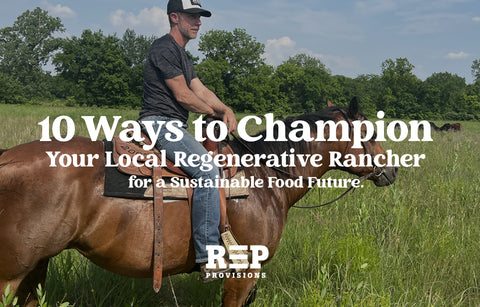Native grasslands are a vital yet often overlooked resource in livestock operations. While introduced pasture species from Eurasia and Africa have become common in many grazing and haying operations, restoring native grassland species offers a host of benefits that can significantly impact the health of your livestock and the sustainability of your land. In this blog post, we'll explore the top ten reasons for considering the restoration of native grassland species in your livestock operation.
1. Diverse Nutrition for Health:
A pasture with a diverse mix of 25-35 native grasses and forbs provides a broad spectrum of vitamins, minerals, protein, and other nutrients. This diversity boosts disease resistance in livestock, reducing the need for vaccinations, antibiotics, and other supplements.
2. Weight Gain:
Studies have shown that native grasses like Switchgrass, Big Bluestem, and Eastern Gammagrass can help cattle gain more weight compared to introduced species like tall fescue and bermudagrass.
3. Deep Roots and Soil Health:
Native grasses have deep roots that can reach up to eight to ten feet, making them resilient to heat and drought. These deep roots also improve soil health and sequester carbon, helping to mitigate climate change.
4. Toxin-Free Grazing:
Unlike some introduced species like Johnsongrass and Tall Fescue, native grasses maintain palatability and quality throughout the season, preventing the accumulation of toxins. This ensures healthier and safer grazing for your livestock.
5. Drought Resilience:
Diverse pastures cover your bases during times of drought or variable weather conditions. The more species in your pasture, the higher the likelihood of some thriving in a given year.
6. Water Retention and Erosion Control:
The deep roots of native grasses draw water down, preventing erosion, protecting the soil surface, and replenishing aquifers. This sustainable approach contributes to better water management.
7. Year-Round Forage Availability:
Warm-season native grasses complement cool-season introductions, ensuring a year-round forage supply. Species like Switchgrass, Big Bluestem, Indiangrass, and Eastern Gammagrass are highly palatable and productive.
8. Wildlife Habitat:
Restoring native grasslands also benefits wildlife, supporting popular bird hunting species like bobwhite quail that require tallgrass species for breeding, feeding, and cover.
9. Carbon Storage:
Native pastures store carbon in the soil at a higher rate than introduced species, making them valuable in carbon market initiatives that can boost your bottom line.
10. Gradual Transition:
It's not an all-or-nothing endeavor. You can maintain introduced pasture species while gradually increasing the diversity of your pasture and yield significant benefits over time.
Conclusion:
Restoring native grassland species in livestock operations offers numerous tangible benefits, from improved livestock health and weight gain to soil health, drought resilience, and support for local wildlife. It's a sustainable approach that can contribute to your bottom line and the long-term health of your land. Consider the advantages of embracing native grasses and forbs as a valuable addition to your livestock operation.
Skyler Smith
Ecological Horticulturist/Rangeland Botanist -Snaplands Environmental
B.S., Conservation Biology, Restoration Ecology – C.S.U




Comments (0)
There are no comments for this article. Be the first one to leave a message!